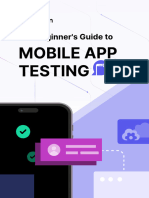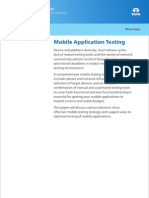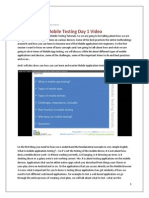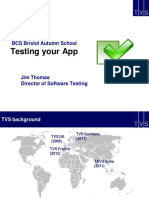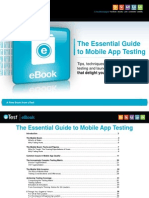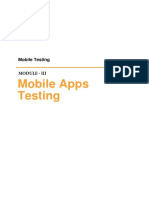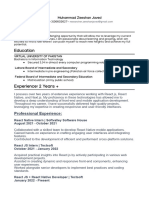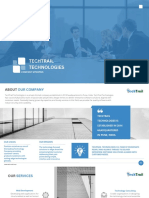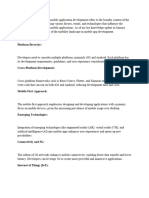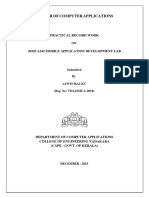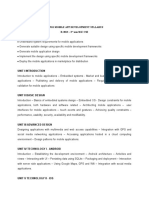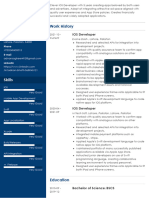0% found this document useful (0 votes)
136 views27 pagesMobile App Testing: A Detailed Step-by-Step Guide
The document provides a comprehensive guide on mobile app testing, emphasizing its importance in ensuring the quality and functionality of mobile applications across various devices and operating systems. It covers key aspects such as types of mobile apps, testing strategies, and essential features to test, including UI/UX, functionality, performance, and security. The guide also outlines a systematic approach to mobile app testing, including defining objectives, resource allocation, and creating test cases.
Uploaded by
DIGANTO ROYCopyright
© © All Rights Reserved
We take content rights seriously. If you suspect this is your content, claim it here.
Available Formats
Download as PDF, TXT or read online on Scribd
0% found this document useful (0 votes)
136 views27 pagesMobile App Testing: A Detailed Step-by-Step Guide
The document provides a comprehensive guide on mobile app testing, emphasizing its importance in ensuring the quality and functionality of mobile applications across various devices and operating systems. It covers key aspects such as types of mobile apps, testing strategies, and essential features to test, including UI/UX, functionality, performance, and security. The guide also outlines a systematic approach to mobile app testing, including defining objectives, resource allocation, and creating test cases.
Uploaded by
DIGANTO ROYCopyright
© © All Rights Reserved
We take content rights seriously. If you suspect this is your content, claim it here.
Available Formats
Download as PDF, TXT or read online on Scribd
/ 27
